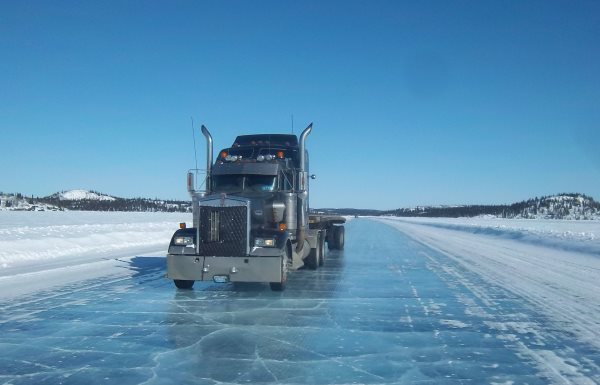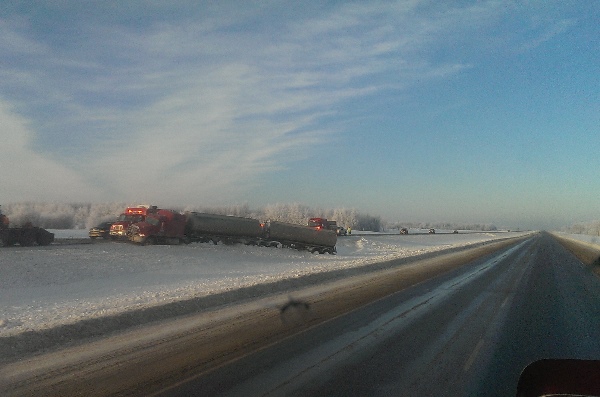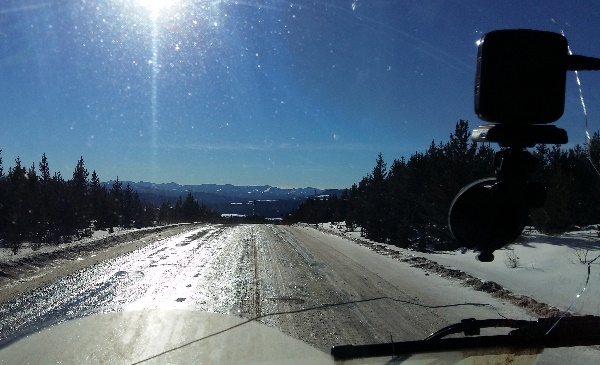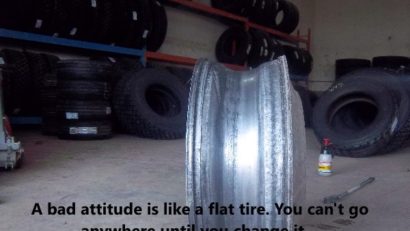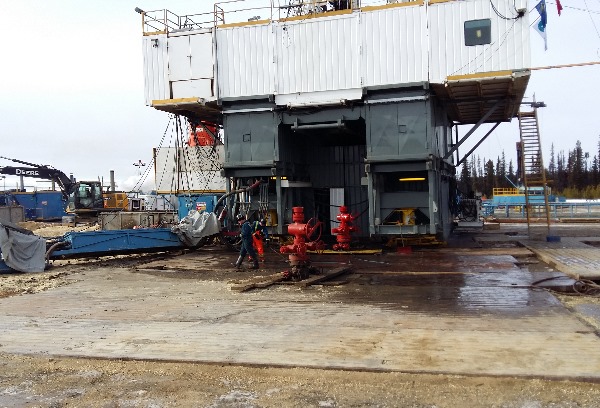We’ll be using truck driver pay to prove our point about exploiting workers, but let’s define a few more important terms before we do. When we refer to exploitation, we’re using the Wikipedia definition that reads as such,
“Economic Exploitation: That is, the act of using another person’s labor without offering them an adequate compensation.”
Here’s a couple more definitions we’ll refer to:
Subsidy – A subsidy is money given (in the form of wages) to keep prices down.
Entitlement – A reasonable expectation of pay, reward, benefit, or gifts. The expectation is usually based on legislation (laws) or another form of rights.
Sense of Entitlement- An unwarranted claim of benefits, or favorable treatment in the way of “gifts”.
We’ll get into all these throughout the article.
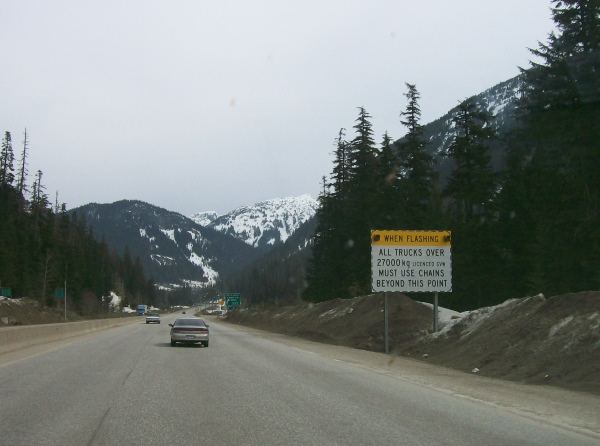
Mountain driving means brake checks and sometimes chaining up. How many trucking companies pay for this work time?
So company drivers are usually paid either by the hour, a specified amount per mile, flat rate per trip, or percentage of the gross profits to the truck. Truck driver salaries are not quite as common, but these are the most common ways to be paid.
It seems like the basic fundamentals of supply and demand don’t seem to be working in the trucking industry. When there’s a shortage of qualified workers in a particular field, wages usually rise to attract more people to that occupation. So what’s the problem with the trucking industry? The driver shortage has been an issue for almost 20 years with little or no positive change. Low wages, lack of respect, poor treatment and long hours have made it an unattractive industry to enter.
Most drivers in the trucking industry are dealing with unfair pay, in exchange for the work they perform. Truck drivers consistently give free labour throughout their day. Even some of the largest and best paying companies claim to pay you for everything, but in reality they don’t. Often there’s a wait period absorbed by the drivers before any compensation is paid for the issues we’ll be addressing below.
Some companies may give you the option to select one, or a combination of methods to be paid like by the mile for driving and by the hour to deliver or load.
So let’s get back to where we started about truck driver pay. Where does the billion dollars a month comes from?
Miles driven, but not paid for. Many of these pre-determined mileage programs were implemented for progressive changes, like allowing salesman to provide rate quotes. It quickly became the standard practice for paying their drivers. It’s unacceptable that mileage shortages are still an issue in trucking, considering the GPS and mapping technology that we have, but still the norm.
Most companies have manipulated this system as a way to generate additional revenue at the expense of the driver. they’ll pay you for the miles to the nearest pre set location before your destination. Drivers have been consistently shorted miles and pay (in some cases 5% to 10%) since this system was implemented.
Furthermore, any company that has set runs shouldn’t be using mileage programs to pay their drivers. If a company regularly sends drivers to specific destinations, they should easily have the ability to determine the accurate mileage.
Customer detention time. Waiting to load, or unload at a customer. This is a basic operating cost in the trucking industry. If something has to move by truck, it obviously has to be loaded and unloaded. The basic costs of doing business shouldn’t be absorbed by the driver.
This has become even more unfair for drivers with the new hours of service regulations. In many cases drivers log book on duty time is being charged, but they’re not being paid. If you drive 3 hours to a receiver and wait 3 hours to unload, you’ve just lost 3 hours of your day to earn an income.
Fueling trucks. Many companies automatically assume this is your responsibility. On average, it takes around 15 to 30 minutes for a refuel. It could easily take longer if there’s a waiting line. If you stop for fuel twice a day, you’ve just given an hour of your time.
Pre-trips. It takes another 15 to 30 minutes to pre-trip your equipment. This is a responsibility of the driver to prepare the companies equipment, but this cost should be covered by the company. There are still numerous companies that don’t pay for pre-trip inspections.
En route inspections and walk around checks. Most professional drivers will take about 15 minutes for an en route inspection. Quick walk-around checks should also be done at every stop. It’s much better to find deficiencies in a safe stopping place or town, then to end up stranded on the road. Does your company cover you for your diligence as a professional? After all, you’re doing this for the safety of everyone.
Brake checks. For those of you running the mountains this is something you’re all aware of. Brake checks account for an average of 3 to 5 additional stops on any given day of running. Also included in Mountain driving is chaining up.
Traffic. Many highway drivers dread running into major cities. Being paid by the mile can take a big toll on your pay when sitting in traffic. If you make $20/hr at 62 mph, how much do you make sitting in gridlock traffic for three hours? Again, this is a part of doing business that the driver shouldn’t have to absorb.
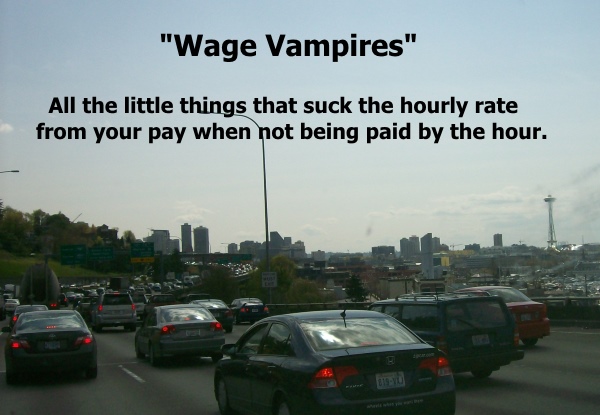
Wage vampires. All the little things that suck the hourly rate from your pay when not being paid hourly.
Weather. Another cost associated with doing business in the winter is lost time due to bad weather. Speeds must be reduced in accordance to the conditions meaning another reduction in truck driver pay. This can also be a safety issue as some drivers will push these limits to maintain their rate of pay, or to make delivery appointment times.
Another added pressure in recent years is companies penalizing freight haulers with fines for being late for appointments.
Break downs. Are you paid for any break down time? If so, you’re one of the lucky ones. It pays to work for the most reputable companies as they often have the most reliable equipment.
Road closures. Bad weather, accidents, avalanches, and floods are a few of the unforeseen problems that can affect truck driver pay. Although some companies will pay delay time, they still require you to absorb some of these costs.
Per Diem pay. This is one thing that could be positive or negative depending on your personal situation. It is usually more negative than positive for drivers. This also gets complicated depending on your financial situation, so we’re going to leave it at your discretion. Companies often advertise this as part of their truck driver pay, when in it’s a deduction you receive anyway.
Summarizing the loses
This may not look like a lot of money, but these things can easily cost a driver thousands of dollars a year. On any given day, a typical long haul driver will absorb between 1 to 3 hours between unpaid fuel stops, pre-trips and delivery time. On a stormy day in the winter, a driver can easily absorb 3 to 5 hours on a full day of driving. These are typical numbers and as drivers we know the worst case scenarios.


